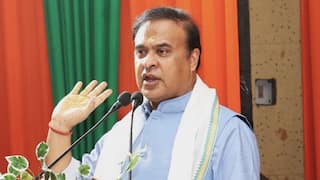India's Manufacturing PMI Edges Up To 55.3 In October, Hiring At 33-Month High: Report
India has shown better resiliency to persistently-high inflation and a sinking currency against the US dollar since the start of this year unlike some other economies, according to S&P Global Market

India’s manufacturing activity expanded at a stronger pace in October as demand and output remained robust, encouraging companies to hire workers at the fastest pace in nearly three years, a private survey data revealed on Tuesday. The Manufacturing Purchasing Managers' Index (PMI), compiled by S&P Global, rose to 55.3 in October from September's 55.1, better than a Reuters poll median forecast for 54.9 and remaining above the 50-level separating growth from contraction for a sixteenth month.
According to Reuters' report, India has shown better resiliency to persistently-high inflation and a sinking currency against the US dollar since the start of this year unlike some other economies.
Pollyanna De Lima, economics associate director, S&P Global Market, said, "The Indian manufacturing industry again showed signs of resilience in October, with factory orders and production rising strongly despite losing growth momentum. Manufacturers continued to loosen the purse strings as they expect demand buoyancy to be sustained in coming months. There was a marked rise in input purchasing, with firms adding to their inventories to better align with client purchasing."
Though overall demand and output expanded at a slower pace last month, growth was still solid, with foreign demand increasing at its strongest rate since May, which eventually led firms to increase headcount at the quickest rate since January 2020. Optimism around future output also remained above the long-term average, the report said.
While input price inflation remained around the previous month's level, prices charged increased at their slowest pace since February, meaning overall inflation, which rose to a five-month high in September, was likely to ease. That could provide some breathing room for the Reserve Bank of India, which is widely expected to adopt a slower approach to rate rises than its major peers in coming months.
The widening policy gap between the hawkish US Federal Reserve and the dovish RBI could lead to a further weakening of the rupee, which has lost over 10 per cent against the greenback this year, suggesting the central bank may continue burning through its dollar reserves to support the currency.






































